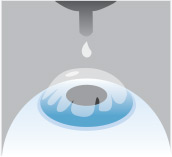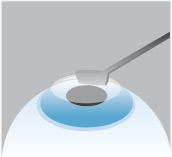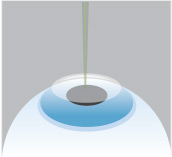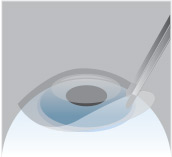
PRK surgery (which stands for “Photorefractive Keratectomy”) is a laser vision correction procedure that may be an option for those who may not be candidates for LASIK. PRK is commonly known as “LASIK without the flap.” Instead of making a thin flap in the cornea as is done in LASIK, the laser treatment in PRK is applied to the surface of the cornea, eliminating all potential complications of a LASIK flap.
With PRK, your individual prescription is used to calculate the amount of the corneal tissue that needs to be removed to correct your vision. An excimer laser delivers a programmed number of pulses of cool ultraviolet light. Each pulse removes a microscopic layer of the cornea thus reshaping the cornea to the appropriate shape.

Alongside numbing drops, an alcohol solution is placed on the eye to help soften the cornea.

The surgeon then smooths the surface of the cornea with a special surgical instrument.

An excimer laser is then used to precisely reshape the curvature of the cornea’s surface.

A bandage-like soft contact lens is then placed on the cornea to help protect the eye as it heals.
I had the PRK procedure done by Dr. Loden two months ago. My only regret is that I did not do it sooner! It was a great experience. Both he and his staff do an amazing job throughout the entire process.
Stephanie Forrester – Facebook